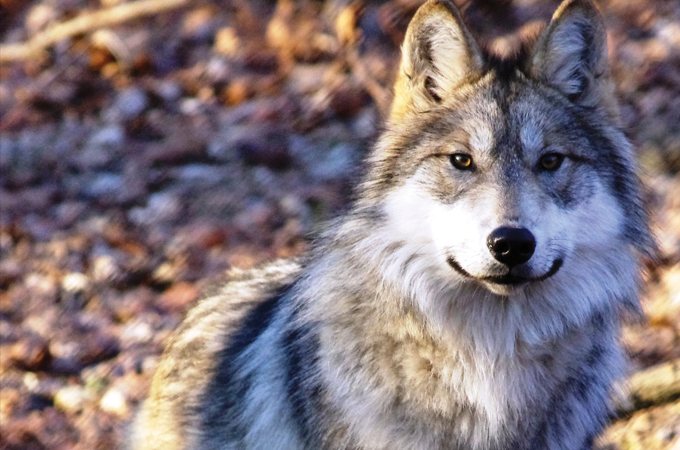Sly, tricky and dangerous. That’s the wolf of fairy tales—and a depiction that strays far from the truth about these amazing animals, says the Endangered Wolf Center, which works to spread awareness about wolves, breed endangered canid species and protect them in the wild. “It’s been ingrained in us that wolves are bad, vicious animals,” says Regina Mossotti, director of animal care and conservation. “But the truth is that wolves are beautiful and charismatic and are essential to the health of our ecosystem.”
Famed zoologist Marlin Perkins and wife Carol founded the center in 1971, two years before the passing of the Endangered Species Act that protects endangered animals like wolves. “His forethought was monumental,” Mossotti says. “We wouldn’t have some of the canid species around today if it wasn’t for Marlin.” Globally, the center is the only wolf facility certified by the Association of Zoos and Aquariums. It also was the first to participate in the U.S. Fish and Wildlife Service’s red wolf and Mexican gray wolf breeding programs, making it a major player in the continued survival of those species. In fact, every pack of Mexican gray wolves now living in the wild in the southwest can trace its lineage to the center, Mossotti says.
Besides red and Mexican gray wolves, the center is home to maned wolves, swift and Fennec foxes, and African painted dogs. While red and Mexican gray wolves are bred and released in the wild, there currently is no release program available for the maned wolf, Fennec fox and African painted dog, and numbers are healthy enough for the swift fox that no release is necessary.
The center encompasses more than 60 acres, allowing plenty of space for its animals to live out a naturally wild life. Here, wolves learn to hunt, raise puppies and live within a pack, all without direct human interference, Mossotti says. Special care is taken not to interact too much with the center’s two recovery species, the red and Mexican gray wolves. “We don’t pet, talk to or hand-feed these animals,” Mossotti says. “When they’re released into the wild, we don’t want them thinking humans are good, because they might get shot. We want to make sure they maintain their natural shyness.”
Those wanting to learn more about the center’s work and see some of its animals can visit. Daytime tours are offered 10 a.m. and 1 p.m. on Fridays, Saturdays and Sundays every month except April and May, when puppies are born. “We want to give mom and new pups some time without human contact of any kind,” says Ashley Rearden, director of education, who adds that colder months are the best time to visit. The center also holds evening programs, including Campfire Wolf Howls and Wine & Cheese Wolf Howls. Those 14 and older wanting a more immersive experience can partake in the Keeper for a Day program ($250; advanced reservation required). Varying levels of membership support also are available.
WHEN » Tours offered Fridays, Saturdays and Sundays
WHERE » 6750 Tyson Valley Road, Eureka, Missouri
WHY » to learn about and encounter wolves
Photo courtesy of Endangered Wolf Center








